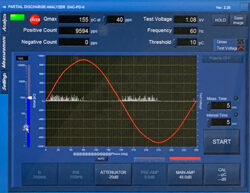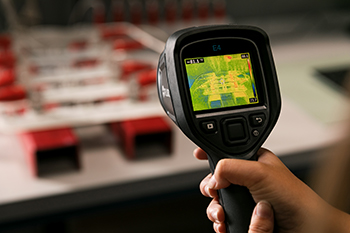
Electrical Bus bar Testing Capabilities
Assurance Through Testing
The objective of testing is to provide confidence in the real-world performance of a part design. Testing also confirms consistency in the outputs of critical manufacturing processes, confirming that there are no defects that affect the part’s performance or expected lifespan. Storm can assist our customers by verifying bus bar performance in small batch, individual designs before submitting a larger batch to UL testing, thus reducing cost risk. See below for an overview of Storm’s testing capabilities.
Three of the most important tests performed on the busbar are the High Potential or Hipot Test, Partial Discharge Test, and the Insulation resistance test, also known as a Megger Test.
Partial Discharge Testing (PD)
The Partial Discharge test is critical for verifying long term part performance and detecting any inefficiencies in power transference. This test is especially important for medium voltage, multilayer laminated bus bars, inverters, and any critical power conductor applications where electrical insulation is of paramount importance. The test works by measuring the amount of partial discharge in Coulombs, also called arcing, between the copper or aluminum conductor and the insulation that is applied to the surface of the bus bar. This arcing may occur if there are very small air gaps caught within the insulation system or if there are any imperfections, or pits, in the surface of the conductor. If significant arcing occurs regularly, it can greatly accelerate the erosion of the insulation and may lead to inefficient power transfer or total failure of the insulation system.
Ampacity Testing (Rated Current Test or Heat Rise Test)
While ampacity tables provide a good estimate for how a conductor of a certain thickness will behave thermally when subjected to a specific level of electrical current, a physical test is the only way to confirm that a part will perform as expected. This test is performed by initiating a specific amperage through the test specimen and measuring the heat rise with thermo-couples. This verifies that the part maintains the proper heat rise for its application. For simple bus bars, the ampacity tables are often enough, but parts with more complex geometries or multiple input/output connections, introduce variables that will skew performance from basic estimations.

Ampacity, or heat rise test
Video of a HiPot test fail
HiPot Testing (Dielectric Breakdown Test)
HiPot (High Potential) testing is performed to confirm that there is proper electrical isolation between conductors. For example, a HiPot test verifies that the multiple conductive layers within a laminated bus bar are sufficiently insulated from one another at a specified voltage. The test runs a specific electrical voltage (AC or DC) through the conductor while a ground is created on the adjacent conductors to verify that there is no electrical path between them. Generally, the HiPot test is run at an exaggerated voltage level of 2X the operating voltage plus 1,000 volts to ensure safety and performance even in extreme scenarios. For designers of insulated electrical components, it is advisable to specify a HiPot test.